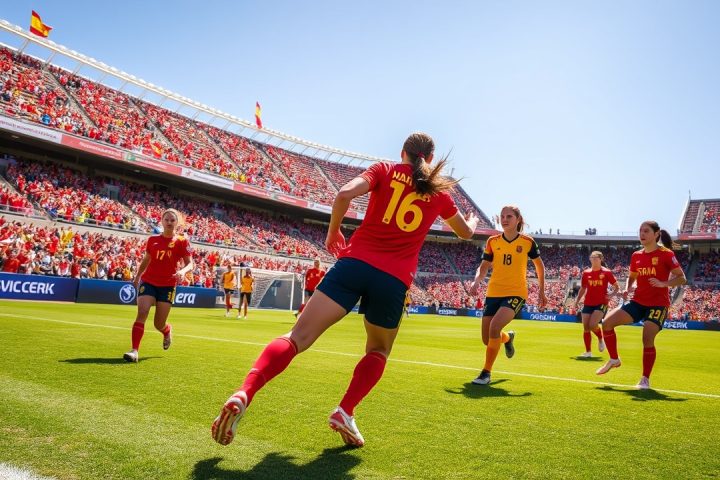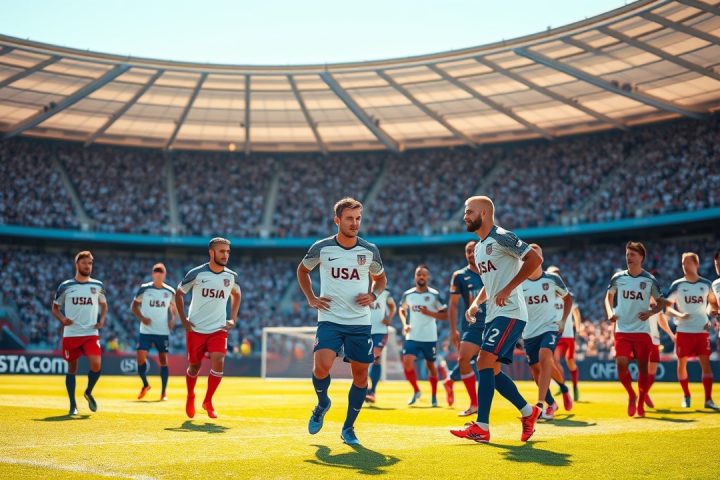The Significance of the No 10 Jersey in Soccer
In the realm of soccer, the significance of the No 10 jersey has reached new heights, becoming a coveted symbol of both individual branding and athletic brilliance. As part of our ongoing Kitted Out series, which delves into the intersection of soccer merchandise and cultural dynamics, we explore how this iconic shirt represents more than just a player’s position on the field.
Personal Branding in Modern Soccer
In today’s world, where personal branding is of utmost importance, athletes are increasingly leveraging their visibility to carve out distinct identities. From mundane trips to local shops captured on social media to in-depth looks at various professions, this trend mirrors the evolution seen in NCAA sports where athletes capitalize on their Name, Image, and Likeness (NIL) to enhance their personal brands.
This summer has seen a noteworthy trend among young soccer stars as they eagerly adopt the prestigious No 10 jersey from their clubs. Players like Cole Palmer and Jamal Musiala have already made the switch, while the impending exit of Luka Modric from Real Madrid to Milan leaves the number up for grabs, perhaps paving the way for Kylian Mbappe. Similarly, at FC Barcelona, rising talent Lamine Yamal is in line to don the No 10 jersey following Ansu Fati’s loan move to Monaco.
The Role of Personal Branding
Marketing expert Daniel Sandison, who heads up Sokito, a manufacturer of soccer boots, points out the growing emphasis on personal branding within the sport.
“The importance of personal branding increases each year, perhaps by 10 to 15 percent,”
Sandison notes. He explains that aspiring elite footballers are drawn to emulate figures like Jude Bellingham, with ambitions to create their presence across platforms like YouTube alongside their football careers.
Palmer’s unique goal celebration, which he attempted to trademark earlier this year, exemplifies this trend. Sandison elaborates that personal branding in football not only generates opportunities but also allows communities to engage with the sport in new ways, enhancing its overall impact.
The Emotional Weight of the No 10 Jersey
The emotional weight of the No 10 jersey extends beyond personal branding—it embodies a rich history in football. New Manchester United recruit Matheus Cunha shared his thoughts on the prestige of becoming the club’s No 10, citing legends like Wayne Rooney and referencing the rich legacy associated with the number.
“It’s not just the shirt; it carries the weight of history,”
he remarked, acknowledging the pressure that accompanies such a revered symbol.
Historically, the No 10 jersey in South America, made famous by icons like Pele and Diego Maradona, carries an air of mystique long before the advent of social media. European footballers like Ferenc Puskas and Zinedine Zidane have contributed to its allure as well. Interestingly, in countries like Spain and Portugal, the emphasis on different shirt numbers diverges, with roles typically associated with the playmaking responsibilities of the No 10 evolving over recent years.
The Evolution of the No 10 Role
Once the hallmark of the traditional attacking midfielder who crafts plays, the No 10 shirt has trained a spotlight on a new generation of versatile players, including those who refuse to be pigeonholed. The historical exchange of this number—such as the handover from Ronaldinho to Lionel Messi at Barcelona—often marks significant shifts in player careers. However, it can also lead to immense pressure, as seen with Ansu Fati, whose transition into the No 10 role did not live up to expectations, resulting in his departure on loan.
This mythos serves to inspire players like Barcelona’s Yamal, who, despite playing as a winger, is already considered worthy of the No 10. His impressive performance at only 17 years of age, including key assists during Barcelona’s latest La Liga campaign and a recent European Championship win with Spain, bolsters his claim.
Conclusion: The Legacy of the No 10 Jersey
As Sandison states, the No 10 jersey symbolizes expectations and creativity. It represents the quintessential playmaker whose role bears the burden of creativity reminiscent of both Maradona and Messi, who both deeply influenced the expectations around this number. The desire to emulate such legendary figures has become prevalent among aspiring footballers. Using a basketball analogy, today’s youth seeks to recreate the ‘Mike Effect’, akin to how Jordan inspired a generation by wearing the iconic No 23, presenting a necessity to wear the No 10 to channel Messi’s unparalleled legacy.
At the heart of this phenomenon lies a profound connection—a celebration of not just individual talent but of the collective aspirations of a sport that continues to inspire across generations. As such, the cycle of coveting the No 10 shirt endures, shaping future stars and the cultures they inhabit.
Kitted Out is a collaborative endeavor with VW Tiguan. The Athletic ensures editorial independence, with no influence from partners over the reporting and editorial processes prior to publication.



